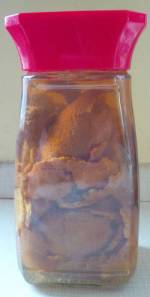Learn all the Terminology About Sharks with our Shark Glossary
Our shark glossary covers some of the terms used on this site that you may not have come across before.
A
Adelphophagy – Intrauterine cannibalism, the act of eating the siblings in the womb.
Ampullae of Lorenzini – These are tiny dents in the head and snout that detect electrical fields
Anal Fin – The fin on the underside of some sharks. Situated between the pelvic fins and the caudal fin.
B
Barbels – Long whisker-like organs found near the mouths of some species. They help to locate food in poor visibility.
Benthic – The seabed, or the bottom of a lake or stream. Benthic sharks are bottom dwellers.
Bioluminescence – Light produced by living organisms, including some sharks. eg. Lantern shark.
Branchial – Related to gills.
C
Caudal Fin – The tail fin.
Caudal Keel - A ridge found on the caudal peduncle of some sharks which provides stability during fast movement through the water.
Caudal Peduncle - The narrow part of the shark to which the tail fin is attached - the tail stalk.
Chondrichthyes – Cartilaginous fish.
Claspers – The two rolls of cartilage found near the pelvic fins of sexually mature male sharks. They serve to guide the sperm into the female’s cloaca during mating.
Cloaca – Opening for excretion of body waste and for reproduction.
Countershading - Having a lighter colour on the underside than on the upper side. This helps with camouflage from both above and below.
D
Dermal Denticles – Tiny tooth-like scales on the skin of a shark. Also called placoid scales.
Dorsal Fin – The fin(s) on the upper side of the shark. Some have only one while others have two.
E
Ectotherm – An animal whose body temperature is determined by its surroundings. Most sharks are ectothermic.
Elasmobranchii – The sub-class of the class Chondrichthyes that sharks, rays and skates belong to.
Endotherm – An animal able to generate its own body heat and maintain a constant temperature regardless of its surroundings.
G
Gill – The organ that allows aquatic animals extract oxygen dissolved in water.
Gill Slits - Most sharks have five gill slits on both sides of their heads from which water exits after being drawn in through the mouth and over the gills.
Gill Rakers – Stiff projections protruding from the gill arches of filter feeders that prevent tiny food particles passing through.
H
Heterocercal – A caudal fin with unequal sized lobes.
Homocercal – A caudal fin with equal sized lobes.
I
Inter-Dorsal Ridge - A ridge of skin between the first and second dorsal fins of some sharks
L
Lateral Line – A row of sense organs found down the side of the body that detect movement in the water.
M
Myomeres – Muscles found along the flanks which aid in swimming.
O
Osmoregulation – The control of water concentration in the body.
Oviparous – Egg laying animals where little or no embryonic development occurs inside the mother’s body.
Ovovivparous – The young develop in eggs and nourished by yolk, but the eggs are kept within the mother’s body until they’re ready to hatch.
P
Pectoral Fins – The pair of fins set low on the body and towards the front.
Pelagic – Relating to open water. Pelagic sharks are found in the open ocean.
Pelvic Fins – The pair of fins set low on, and to the rear of the body.
Placoid Scales - Also called dermal denticles. Small tooth-like scales on the skin of a shark
Plankton – Microscopic animals (zooplankton) and plants (phytoplankton) found floating in the marine environment and eaten by filter feeders.
R
Ram Filtration - A method of filter feeding where the shark swims forward with a wide open mouth to force water in and over the gills.
Ram Ventilation - A method of breathing where the shark must keep swimming forwards in order to keep oxygenated water flowing over the gills.
Rostrum - The long, saw-like snout of the saw sharks and sawfishes.
S
Spiracle – Opening behind the eye in some sharks which directs oxygen to the eye and brain, and aids water flow over the gills.
Squalene – Contained in the oil found in shark’s liver.
T
Teleost - Bony fish.
Tonic Immobility - A state of paralysis that can be induced by turning a shark on its back.
V
Viviparous – A reproduction mode where the embryo develops inside the mother’s body.
We will be adding to our shark glossary as the website grows.
Return to World of Sharks from Shark Glossary
Recent Articles
-
Thresher Sharks
Aug 27, 14 10:51 AM
Thresher sharks are unmistakable with that huge upper lobe on the caudal fin. Let's find out more about them. -
Sharkwater
Aug 14, 14 12:42 PM
Sharkwater is a documentary by Rob Stewart highlighting the plight of the sharks in our oceans. -
Natural Cleaners
Aug 13, 14 08:57 AM
Natural cleaners and homemade skincare products are not only better for the environment, they're better for you and your family.
